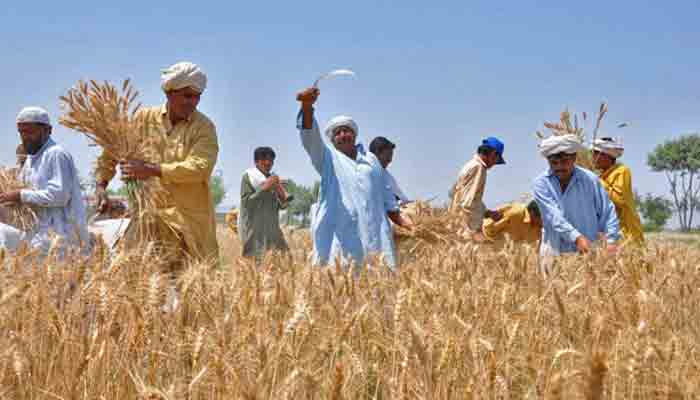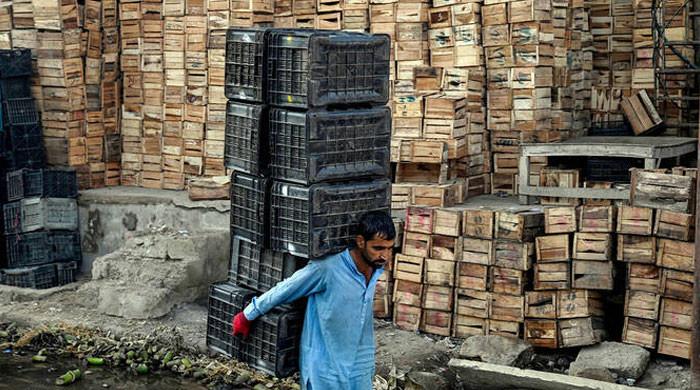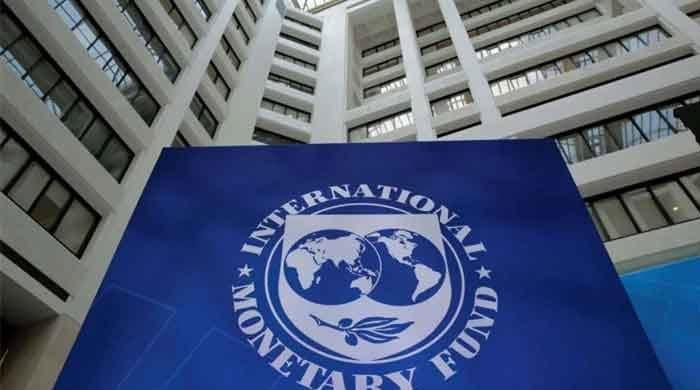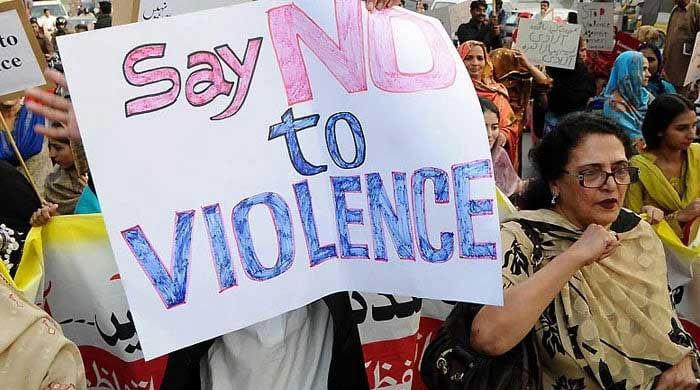Protecting Pakistan’s agriculture sector
To prevent an undue load on the country’s import bill, the government must shift back to an agricultural export-based economy
September 30, 2021

Despite wheat output of around 27 million tonnes, Pakistan is still unable to fulfil local demand and is planning to import three million tonnes of wheat at expensive rates -- around Rs65 per kg. Similarly, 0.6 million tonnes of sugar will also be imported, on a periodic basis, at the highest rates of Rs106 and Rs113 per kg.
That a country with the largest irrigation network and the highest agricultural employment is unable to feed its own people is a worrisome situation for its future food security. The share of agriculture in the GDP has dropped to less than 20% from more than 25% a decade ago. Over time, the agriculture sector’s performance has deteriorated. As a result, an agricultural country is now required to import essential agricultural goods. The current predicament is the result of ill-thought-out government policies and ground-level causes.
In most parts of the country, agriculture is still a labour-intensive sector due to a lack of modern technologies. Roughly two decades ago, it employed around 43% of the country’s whole workforce. However, agriculture currently employs around 38% of the workforce, a number that is gradually declining. The agricultural sector’s employment elasticity was 0.91 in 1972-78, but it subsequently dropped to 0.05 in 2011-18.
The reason for this is that a farmer gets less than Rs100 per day to grow crops, which is substantially less than the Rs800 he could earn as a labourer in a city. As a result, an increasing number of people are migrating to cities, leading to uncontrolled urbanisation. The agriculture sector is anticipated to lose employment absorption capacity to the services sector, demonstrating Pakistan’s changing economic structure.
A traditional farmer’s major concern is the availability of high-quality seeds, water, fertiliser and pesticides at affordable prices. According to the Pakistan Bureau of Statistics (PBS), the average prices of nitro phosphate, diammonium phosphate, and urea have increased by 11.8%, 10.2%, and 25.6% per year. Fertiliser costs have increased by roughly 35% in the last six months and have more than doubled since 2018. Farmers, on the other hand, claim that the actual rise in the market is much higher than the one depicted in the prices statistics.
Also, since most farmers lack requisite training and education experience, they end up buying low-cost, low-quality seeds and inefficient pesticides in the local market owing to high input prices, resulting in low crop yields. Fresh water availability is another challenge that local farmers are struggling with as a result of climate change, and rising fuel and electricity prices have severely discouraged farming. Despite the availability of contemporary technology, the agricultural yield has declined or stayed static due to a lack of research and innovation.
Textile, sugar, flour, dairy, fisheries, and numerous value-added goods are all directly or indirectly related to the agricultural sector. Such industries are also affected by a lack of supply or high production costs for agricultural products, which subsequently increases consumer prices.
The presence of middlemen has had a detrimental impact on both farmers and end consumers. Their influence in transportation and storage has grown over time, and as a consequence, farmers and consumers must rely on their prices rather than government-recognised prices. This is due to the government’s limited or non-existent control over lobbying power. Another concerning aspect is ‘inertia’ (a word used in behavioural economics and psychology), which influences a farmer’s decision to grow a crop since it is delayed a year after the current year’s pricing, causing uncertainty.
Consequently, current crop prices affect supply in the following year (ie, low supply results in higher prices in a given year, which motivates farmers to plant more in the following year, resulting in lower prices, and vice versa), leading to farmer exploitation by middlemen. Whatever the prices are, either farmers or end customers suffer, and some middlemen enjoy a larger share in profits either directly or by hoarding.
In industrialised countries, farmers are still considered the backbone of the nation since they feed the country's population. The government protects them from excessive input costs and discrimination and exploitation by middlemen. In Pakistan, this sector requires more attention because it has long been a key contributor to the country’s GDP, but it is now falling. To solve these challenges, the government must shift some resources to farmers by establishing rural transformation centres (RTCs) and field agricultural schools at the district and union council levels.
The goal of these centres should be to give agricultural information to farmers, sell seeds, fertilisers, and insecticides on credit or at affordable rates, and offer financial assistance for modern machinery. It may also introduce a geographic information system-based management system to be utilised in integrated research, training, production, and processing system. RTCs, which will act as technology and pricing information centres, should be linked with field agricultural centres at the union council level.
The centres will also serve as a place for meetings and training and the provision of other services including social services. Instead of supporting agriculture businesses, the government should transfer resources to farmers to safeguard them from exploitation, which would ultimately protect the final consumer and boost exports.
To prevent an undue load on the country’s import bill, the government must shift back to an agricultural export-based economy.
The writer works at the Ministry of Planning Development & Reforms (Planning Commission) Pakistan.
Email: [email protected]











